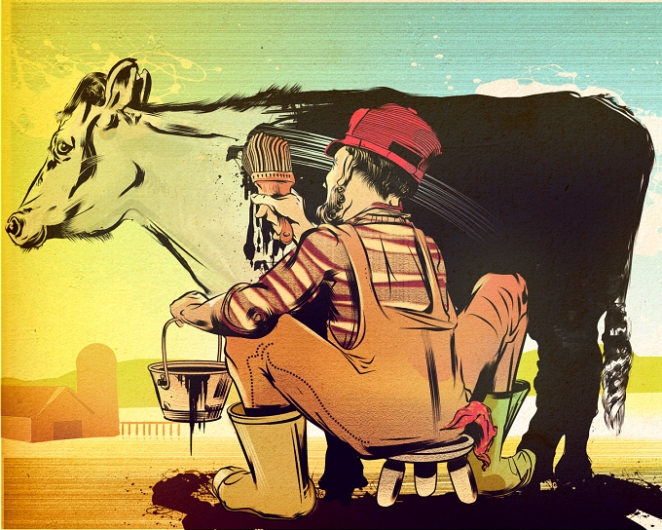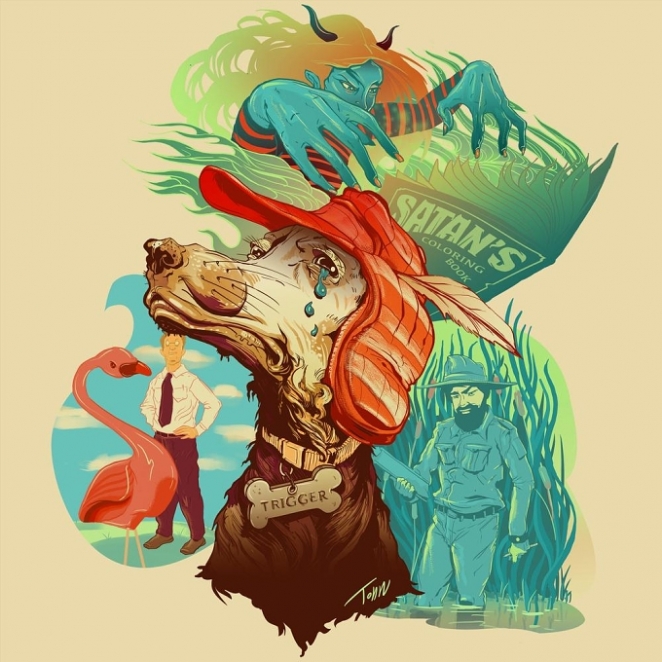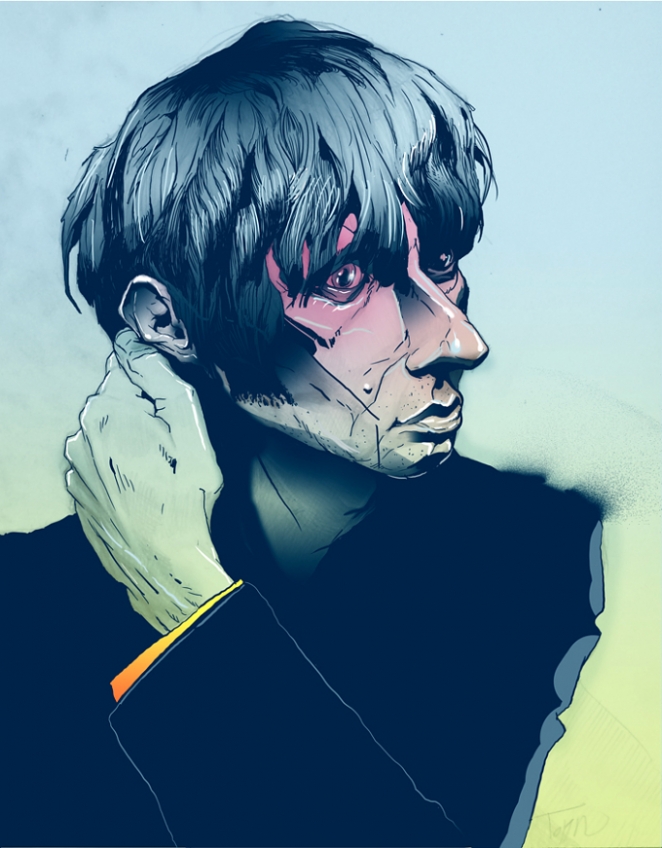Based in Burlington, Vermont (USA), Michael Tonn is the living proof that sometimes, talent is all you need for sheer luck to set things in motion. By his own admission, it was the industry who found him, not the opposite – as a number of small local jobs gave him the necessary confidence to push himself out of his comfort zone and become a freelance illustrator.
With a delightful style mixing classical illustration with skateboard and graffiti art, Michael has had the chance to work for a number of brands in commercial projects, but it is in his amazing works of digital art that his unique personality truly shines through. A firm believer in creative independence, Michael has no trouble finding inspiration wherever he goes, being part of a vast world which is only waiting to be encapsulated, polished and framed by his impressive creative skills.
In this Member Spotlight, we are learning more about Michael Oliver Tonn, a talented illustrator with over a decade of professional experience in the creative field.

How did you get into the industry?
The industry found me really. I met some people who liked my work and one happened to be an art director for a local arts, news and entertainment paper, and the other was an author looking for an artist to illustrate his book. These two jobs were an introduction, and they led to a fair amount of local work. This was a great way to “cut my teeth” as they say, but it wasn’t until some years later that I decided to really push things. I went digital and found representation, things started to snowball from there.
Where are you based now and who do you work for?
I am based in Burlington, Vermont (USA). I still work for the local paper though we have both grown up together, they are now the areas leading source for news and culture. While they have been my longest running client I have worked for other media outlets such as VICE creating editorial illustrations and I have done some more commercial work for brands such as Black Diamond, and story book illustrations for the Choose Your Own Adventure book series.
If you weren’t in your current industry, what would you be doing?
I am heavily into literature, I would probably be taking a stab at writing or teaching Russian literature.
Can you explain your creative process?
It often begins with sitting and thinking. Sometimes, I will have an idea immediately after receiving the assignment, but often I have to toss things around in my mind a lot first. If my brain won’t find the answers then I will just start sketching. It is amazing, what I might call “free association," drawing can generate. Once I get one good piece of the drawing down I can start building it out from there. I’m obsessed with composition and will often let it dictate content.

How would you describe your style?
I would say it is a bit of a mash up of some classical illustrators such and Arther Rackham and Edmund Dulac and all the comics, skateboard graphics and graffiti I loved as a kid. A lot of people say that some of my work has a real Eighties vibe to it, especially color wise, so perhaps some of those glorious Trapper Keepers I had as a kid are coming through too.
Which individuals do you gain inspiration from? Do you have any heroes in the industry?
Tomer Honuka and Andrew Archer come straight to mind, if it wasn’t for them I’m not sure that I would have found my way into working digitally.
If you had to pick one ideal client/employer, who would that be and why?
The content of my work is really quite diverse so I would be hard pressed to say who would be a perfect fit, but I can say that I would be really excited to work for any large publisher of Books or Comics. I recently did some work for the Choose Your Own Adventure book series and found that not only really enjoyable but a good match stylistically. I also enjoy work that is part of a branding campaign and find some of the projects Nike has taken on to be really inspired.

How has technology affected the way you work?
I started out with pencils and watercolors but now I often work completely digitally. I seldom try to hide that I work digitally by mimicking traditional mediums. I launch straight into the use of gradients, fills and other luminous effects that screens provide. It was never my approach to see how I could recreate what I was doing with traditional mediums on the computer, but rather to embrace the digital for what it has to offer. So I would say that it has completely changed the way I work.
What’s your secret to staying inspired and motivated?
Honestly, just living my life. I don’t get too caught up in the concept of being an artist because chasing creativity can be a total dead end. Do what makes you feel free, creativity will follow.

What’s the work achievement you’re most proud of?
It was a recent piece I did for the cover of the Seven Days newspaper here in Vermont called Light in the Dark. The paper needed a cover for their New Years issue that acknowledged the difficult times we have all been through with the pandemic but also was an expression of hope and triumph for the future. I feel I delivered something that was really heart felt and beautiful, a sort of homage to the darkness and the light we all must constantly navigate, while rapping it up in a playful and relatable human moment.
How do you recharge away from the office?
Friends, absolutely. Then I recharge from my friends with long Russian novels.
What is one tip for other aspiring creatives looking for work?
Really take the time to develop your skills, then get yourself out there, you will be surprised how opportunities present themselves. And give every job your best, you never know where it may lead you. For instance, I picked up a private commission for some guy who wanted a poster made for his girlfriend. His budget was really small but I still worked hard on it and delivered a great illustration. A few years later we was working as a designer at VICE and remembered me.
What is the one thing that you would change about the industry?
Allowing illustrators to follow their own instincts. I have been involved in projects where there was an over abundance of input and the creative process was stifled. If art directors want great art they must let the artists follow their inspiration, versus killing it with over management. It is okay for clients to have directions and needs, of course, but lay them out clearly then let the artists do their thing. That and getting payment for work in a timely manner.

Any websites, books or resources you would recommend?
Just walk around whereever you are and see what’s up, find those inner resources.



